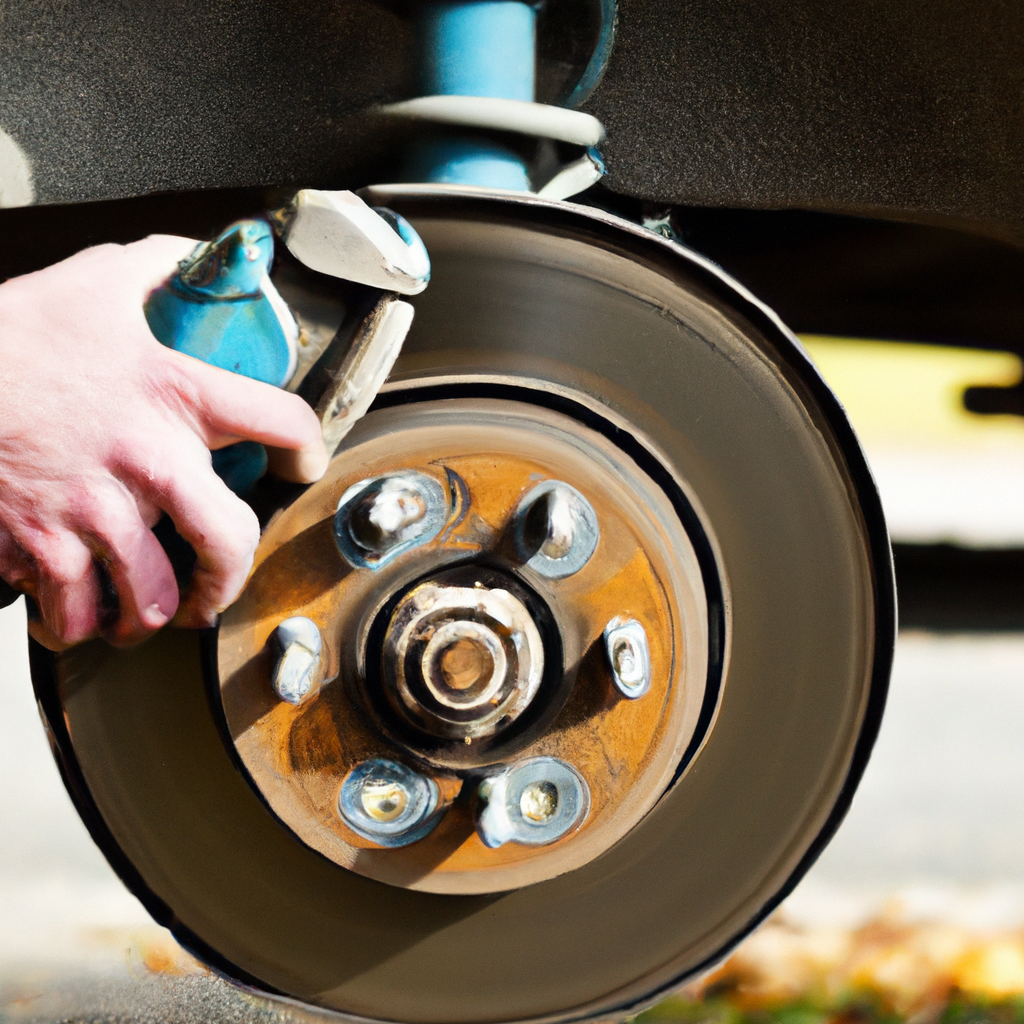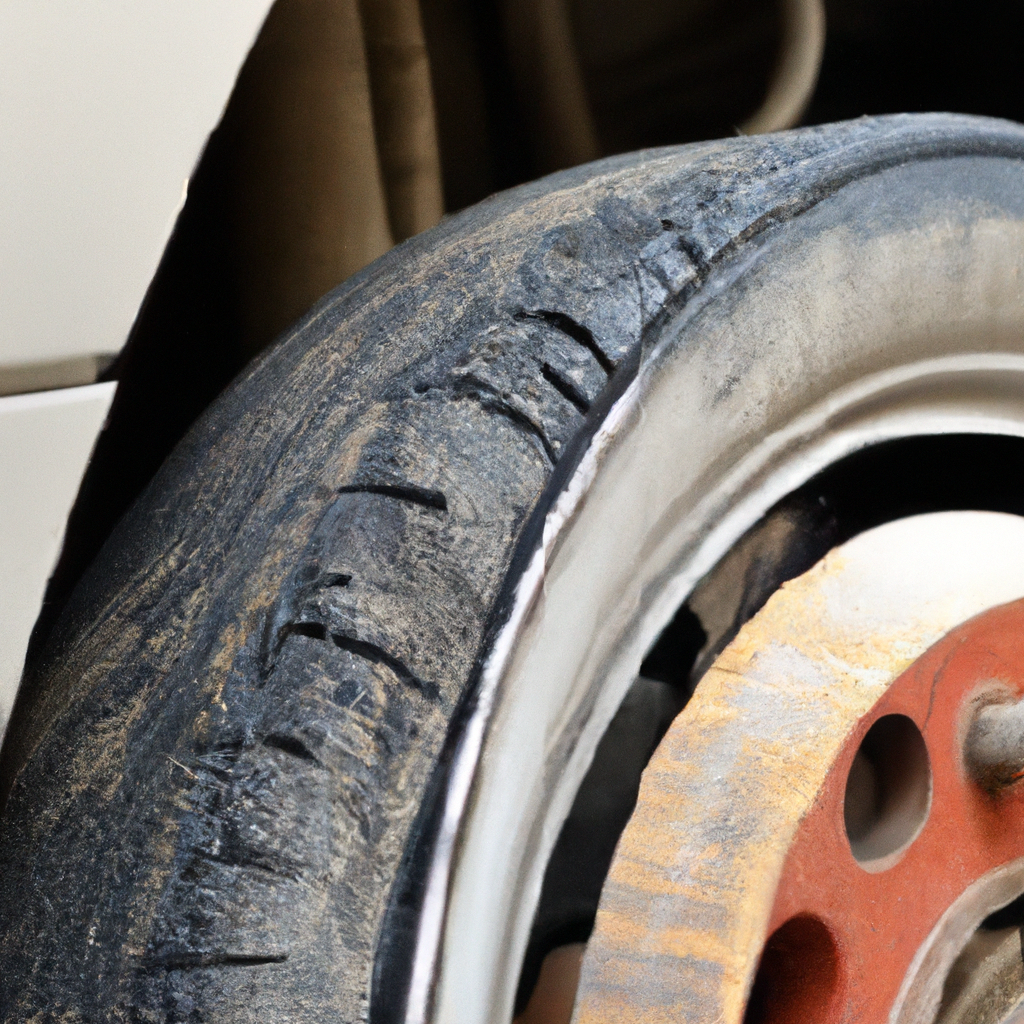Have you ever wondered how to keep your wheels free from that unsightly brake dust buildup? In this article, we’ll discuss some simple yet effective tips to help you prevent brake dust accumulation and keep your wheels looking clean and shiny. From regular cleaning routines to using specialized brake pads, we’ve got you covered. Say goodbye to those dirty wheels and hello to a gleaming set that will make heads turn as you drive by. So, let’s get started and discover the secrets to maintaining brake dust-free wheels!
Regular Cleaning
Taking the time to regularly clean your wheels is essential for preventing brake dust buildup. Brake dust is a combination of fine particles, such as debris from brake pads and rotors, that accumulate on the surface of your wheels over time. If left unattended, brake dust can cause unsightly stains and even damage your wheels. However, by following a few simple cleaning steps, you can keep your wheels looking their best.
Washing the Wheels
To begin the cleaning process, start by washing your wheels with a mild soap and water solution. This will help remove any loose dirt or debris that may be stuck on the surface. Be sure to use a soft-bristle brush or sponge to avoid scratching the wheels. Rinse thoroughly with clean water to remove any soap residue.
Using Wheel Cleaner
After washing the wheels, it may be necessary to use a specialized wheel cleaner to remove stubborn brake dust. Wheel cleaners are designed to break down and dissolve brake dust, making it easier to remove. Choose a cleaner that is safe for your specific type of wheels, such as aluminum or chrome. Follow the manufacturer’s instructions and apply the cleaner using a soft brush or sponge. Allow the cleaner to sit for a few minutes before rinsing thoroughly with clean water.
Using a Pressure Washer
For a more thorough cleaning, you can also use a pressure washer to remove brake dust from your wheels. A pressure washer can help reach those hard-to-reach areas and provide a more powerful stream of water to dislodge stubborn dirt and debris. However, it’s important to use caution when using a pressure washer, as too much pressure or using the wrong nozzle can damage your wheels. Follow the manufacturer’s guidelines and keep the nozzle at a safe distance from the wheels to avoid any potential harm.
Scrubbing with a Brush
In addition to using wheel cleaner and a pressure washer, scrubbing your wheels with a brush can help remove any remaining brake dust. Use a soft-bristle brush or a wheel brush specifically designed for this purpose. Gently scrub the surface of the wheels, focusing on areas where brake dust tends to accumulate, such as around the brake calipers and behind the spokes. Rinse thoroughly with clean water to remove any loosened dirt or debris.
Protective Coating
While regular cleaning is important, applying a protective coating to your wheels can provide an extra layer of defense against brake dust buildup. Protective coatings, such as wheel sealants or ceramic coatings, can help repel dirt and brake dust, making it easier to clean and maintain your wheels.
Applying a Wheel Sealant
One option for protecting your wheels is to apply a wheel sealant. Wheel sealants are typically formulated with polymers or synthetic wax that create a protective barrier on the surface of your wheels. This barrier helps prevent brake dust from adhering to the wheels, making it easier to keep them clean. To apply a wheel sealant, start by thoroughly cleaning and drying your wheels. Then, using a clean microfiber cloth or applicator, apply a thin layer of the sealant to the surface of each wheel. Allow the sealant to cure according to the manufacturer’s instructions before driving or exposing the wheels to water.
Using Ceramic Coatings
Another option for protecting your wheels is to use ceramic coatings. Ceramic coatings provide a durable and long-lasting protective layer that can resist brake dust, dirt, and other contaminants. Unlike traditional wax or sealants, ceramic coatings chemically bond to the surface of your wheels, creating a hydrophobic and heat-resistant shield. Applying a ceramic coating requires thorough preparation and careful application. It’s recommended to seek professional assistance or follow detailed instructions provided by the coating manufacturer.

Brake Upgrades
While regular cleaning and protection are effective in preventing brake dust buildup, upgrading your brakes can also help reduce the amount of dust generated in the first place. Upgrading certain components of your braking system can not only improve performance but also minimize brake dust production.
Upgrading Brake Pads
One of the most effective ways to reduce brake dust is by upgrading to low dust brake pads. Traditional brake pads often contain materials that generate more dust during braking. By switching to low dust brake pads, you can significantly reduce the amount of brake dust produced. Low dust brake pads are formulated with materials that create fewer particles when in contact with the rotors, resulting in cleaner wheels. When considering brake pad upgrades, consult with a trusted mechanic or refer to the manufacturer’s recommendations for your specific vehicle.
Installing Dust Shields
Another option for reducing brake dust buildup is to install dust shields. Dust shields are metal or plastic covers that are designed to fit behind your wheels, protecting them from brake dust and other debris. These shields create a barrier that prevents dust particles from reaching the wheels, keeping them cleaner for longer periods. Dust shields are generally vehicle-specific, so make sure to choose the correct size and fit for your car or consult with a professional for installation.
Using Slot-Style Rotors
Slot-style rotors offer another solution for minimizing brake dust. These rotors feature slots that help dissipate heat and prevent the buildup of brake dust. The slots in the rotors allow for better air circulation, which helps cool down the braking system and reduces the amount of dust generated. Slot-style rotors are available for various vehicle models and can be a worthwhile upgrade for those looking to reduce brake dust buildup.
Proper Driving Techniques
In addition to cleaning, protecting, and upgrading your brakes, practicing proper driving techniques can also help minimize brake dust accumulation. By adjusting your driving habits, you can reduce the wear and tear on your braking system and subsequently decrease the amount of dust produced.
Avoiding Heavy Braking
One of the most effective ways to prevent brake dust buildup is to avoid heavy braking whenever possible. Heavy braking generates more heat and friction, which can lead to increased brake dust production. Instead, try to anticipate traffic and road conditions to allow for smoother, gradual braking. By giving yourself more time to slow down or stop, you can reduce the stress on your brakes and minimize dust generation.
Modulating Braking Pressure
Another important technique is to modulate your braking pressure. Instead of abruptly applying full force to the brake pedal, try to apply pressure gradually and evenly. This allows your brakes to work more efficiently, reducing the amount of brake dust created. By being mindful of your braking technique, you can prolong the life of your brake pads and minimize dust buildup on your wheels.
Avoiding Hard Stops
Hard stops, which involve slamming on the brakes suddenly, not only wear down your brakes but also result in increased brake dust. Avoiding hard stops whenever possible can help reduce the accumulation of brake dust on your wheels. Instead, try to maintain a safe following distance and gradually decrease your speed when approaching a stop. This will help prolong the life of your brakes and keep your wheels cleaner.

Avoiding Aggressive Driving
Apart from practicing proper driving techniques specifically related to braking, adopting an overall less aggressive driving style can also contribute to reducing brake dust buildup. By being mindful of your speed, acceleration, and stopping habits, you can significantly decrease the amount of dust generated.
Driving at a Moderate Speed
Driving at a moderate speed not only improves safety but also decreases the strain on your brakes. Higher speeds require more frequent and intense braking, resulting in increased brake dust production. By maintaining a reasonable and consistent speed, you can minimize the wear on your brakes and keep brake dust buildup to a minimum.
Avoiding Rapid Acceleration
Rapid acceleration puts additional stress on your braking system, often leading to more brake dust. By avoiding unnecessary acceleration or “jackrabbit starts,” you can decrease the wear on your brake pads and subsequently reduce the amount of brake dust produced. Instead, try to accelerate smoothly and gradually to help preserve your brakes and keep your wheels cleaner.
Making Smooth Stops
Similar to avoiding heavy braking and hard stops, making smooth stops is essential for minimizing brake dust buildup. By gradually reducing your speed when coming to a stop, you allow the braking system to work in a more controlled manner. Smooth stops not only put less strain on your brakes but also ensure a cleaner and safer driving experience.
Avoiding High Dust Brake Pads
If you’re particularly concerned about brake dust buildup, choosing the right type of brake pads can make a significant difference. Certain brake pads are specifically designed to produce less dust, helping to keep your wheels cleaner for longer periods.
Choosing Low Dust Brake Pads
When selecting new brake pads, consider opting for low dust or dustless brake pads. These pads are formulated with materials that generate fewer particles during braking. While low dust pads may not completely eliminate brake dust, they can substantially reduce its accumulation on your wheels. Consult with a knowledgeable mechanic or refer to manufacturer recommendations for the best low dust brake pads suited for your vehicle.
Opting for Ceramic Brake Pads
Ceramic brake pads are another excellent option for minimizing brake dust. Made from a combination of ceramic fibers, nonferrous metal compounds, and resin, these pads produce significantly less dust compared to traditional brake pads. Ceramic brake pads offer excellent stopping power, low noise levels, and reduced brake dust accumulation. Although ceramic brake pads are generally more expensive than conventional pads, the benefits they provide make them a worthwhile investment for those looking to keep their wheels cleaner.

Maintaining Suspension and Alignment
Proper maintenance of your vehicle’s suspension and alignment can also play a role in reducing brake dust buildup. When your suspension and alignment are in good condition, your car’s weight is distributed evenly, ensuring even wear on your brake pads and reducing the amount of dust generated.
Regular Suspension Maintenance
Regularly inspecting and maintaining your suspension system is crucial for optimal brake performance and minimizing dust buildup. Components such as shocks, struts, and control arms should be checked for signs of wear or damage. If you notice any abnormalities, consult with a professional mechanic to have them repaired or replaced. Keeping your suspension system in good condition will help ensure smooth and even braking, contributing to cleaner wheels.
Alignment Inspection and Adjustment
Wheel alignment plays a vital role in distributing the braking forces evenly across your wheels. When your wheels are properly aligned, each brake pad makes contact with the rotor evenly, resulting in decreased wear and less dust production. It’s recommended to have your wheel alignment checked regularly, especially after hitting a curb or pothole. If your vehicle shows signs of improper alignment, such as uneven tire wear or steering wheel vibration, have it inspected by a professional and adjust the alignment as needed. Proper alignment can contribute to a cleaner braking system and reduce the accumulation of brake dust.
Keeping the Wheels Cool
Excessive brake heat is not only detrimental to your overall braking system but can also contribute to the buildup of brake dust. By taking measures to keep your wheels cool, you can mitigate the production of brake dust and promote cleaner wheels.
Avoiding Excessive Brake Heat
Excessive brake heat can lead to increased brake dust production. To avoid this, try not to put excessive strain on your brakes for extended periods. Prolonged and intense braking, such as riding your brakes downhill or braking continuously over long distances, can generate excessive heat and result in more brake dust. Whenever possible, take breaks during extended periods of heavy braking to allow your brakes to cool down.
Allowing Cool Down Periods
After driving, especially if you’ve been engaging in heavy braking, it’s important to allow your brakes to cool down before parking your vehicle. Parking immediately after intense braking can cause the residual heat to transfer to the wheels, promoting the adherence of brake dust. To prevent this, continue driving at a moderate speed for a short distance without excessive braking, allowing the air to cool down the brake system naturally. By allowing cool down periods, you reduce the chances of brake dust accumulation on your wheels.

Reducing Brake Dust Transfer
In addition to preventing brake dust buildup on your wheels, you should also take steps to reduce the transfer of brake dust onto other areas of your vehicle, such as the tires. By keeping brake dust off your tires, you can maintain a cleaner and more visually appealing appearance.
Avoiding Driving in Dusty Conditions
Driving in dusty conditions can increase the chances of brake dust transferring to your tires. Dust particles in the air can mix with brake dust on your wheels, creating a messy and unsightly combination. Whenever possible, try to avoid driving in dusty areas or during dry, dusty weather conditions. This will help minimize the accumulation of brake dust on your wheels and reduce the chances of it transferring to your tires.
Keeping Brake Dust Off Tires
To keep your tires clean and free from brake dust, regularly clean them with a non-acidic tire cleaner. Using a dedicated tire brush, gently scrub the surface of the tires to remove any accumulated dust or grime. Rinse thoroughly with water and dry with a clean microfiber cloth. By maintaining clean and brake dust-free tires, you can enhance the overall appearance of your vehicle and prevent the spread of dust to other areas.
Regular Inspection and Maintenance
Lastly, conducting regular inspections and maintenance on your braking system is crucial for ensuring optimal performance and minimizing brake dust accumulation. By staying proactive and addressing any issues promptly, you can prevent excessive brake dust buildup and preserve the cleanliness of your wheels.
Checking Brake Dust Accumulation
Regularly inspect your wheels for brake dust accumulation. Monitoring the level of buildup can help you identify any underlying issues with your brake system or determine if certain cleaning or maintenance steps need to be taken. If you notice a significant increase in brake dust, it may be a sign of worn brake pads, improper alignment, or other problems that require attention. By catching these issues early on, you can prevent further damage and keep your wheels cleaner.
Cleaning Brake Calipers
Alongside inspecting your wheels for brake dust accumulation, it’s also important to periodically clean your brake calipers. Brake calipers can accumulate brake dust and debris over time, which can affect their performance and contribute to brake dust buildup on your wheels. Use a soft brush and a specialized brake cleaner to carefully clean the calipers, removing any dirt or dust particles. Regular cleaning of the brake calipers will help maintain their functionality, prolong the life of your brake pads, and reduce the amount of brake dust on your wheels.
In conclusion, preventing brake dust buildup on your wheels requires a combination of regular cleaning, protective coatings, brake upgrades, proper driving techniques, and appropriate maintenance. By implementing these strategies, you can ensure cleaner wheels, improved performance, and a more enjoyable driving experience. Remember to follow the recommended guidelines for cleaning products, consult with professionals when needed, and stay consistent with your maintenance routine. With these steps in place, your wheels will remain free from brake dust and showcase their true beauty.


